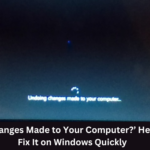New remote hires can easily feel out of place without an in-person connection. They struggle to pick up the company vibe and miss the quick feedback that helps them grow. A solid onboarding process changes this, giving them a sense of belonging and meaning from day one.
However, studies show that 88% of companies don’t quite get onboarding right, which leads to disengaged employees and high turnover.
How can you ensure your remote team feels supported and connected from day one?
This article explores smooth, effective remote onboarding strategies to ensure new hires feel connected from the start. We’ll also look at tools like employee monitoring software with a PC monitoring software that will help them adapt quickly, reducing confusion and increasing their confidence.
The Challenges of Remote Onboarding
Remote onboarding introduces three main obstacles that can hinder a new hire’s success:
- Lack of Connection: Off-site employees miss out on daily office interactions. New hires may feel left out without those quick hallway chats or spontaneous check-ins. This gap can lead to a sense of isolation, with motivation and productivity quietly fading.
- Unclear Expectations: Working from afar makes setting clear expectations challenging. New employees can feel unsure about their roles and goals without in-person guidance. This uncertainty can lead to slip-ups, missed deadlines, and a slower learning pace, making it tougher for them to feel fully part of the team.
- Limited Visibility for Support: Onboarding from a distance makes it harder to notice when someone’s struggling. Without those in-person hints, it’s easy to overlook when employees feel swamped or disengaged. This lack of visibility can mean slower support, which leaves new team members frustrated.
Effective Strategies for Seamless Remote Onboarding
To build a setup that keeps new hires engaged, productive, and in sync with team goals right from day one, try these strategies:
Establish Clear Goals & Expectations from Day One
Starting remotely, new employees need clarity on what’s expected. Clear goals and specific tasks help them focus and feel purposeful from the start.
Define what success looks like for the first few weeks, breaking down tasks and milestones that are easy to follow. Ensure they understand how their role contributes to team goals to give their work broader meaning. A written outline of goals and success metrics also gives them a precise reference point as they start.
Clear expectations reduce uncertainty, motivate new employees, and set the foundation for long-term success.
Foster a Culture of Connection & Communication
Creating connections is vital for remote hires to feel they truly belong from day one. Regular formal and casual check-ins help dissolve the distance, creating a warm, inviting space where new hires feel seen and valued.
Strong team bonds can bring about real benefits, like 41% less absenteeism and a 59% drop in turnover.
You can spark this connection with virtual coffee breaks, a buddy system, and relaxed team brainstorming sessions. Casual chats allow everyone to genuinely connect, while a buddy gives new hires a trusted guide for quick questions and advice. Altogether, open dialogue and team bonding nurture trust, boost inclusion, and strengthen engagement – a solid launchpad for productivity and collaboration.
Provide Structured, Self-Paced Training with Feedback Loops
Remote employees benefit from structured onboarding that allows them to learn at their own pace while still feeling supported. Accessible training resources let them revisit information whenever needed, boosting their confidence, sharpening their understanding of their role, and easing any stress.
Feedback loops are key to this process. Frequent check-ins and constructive feedback ensure that new hires feel guided and are progressing smoothly. Additionally, setting up a shared document for ongoing feedback allows new hires to track their own growth and see areas for improvement in real time.
Studies indicate that employees who receive regular feedback are 3.6 times more likely to be engaged, reinforcing the value of consistent communication throughout the onboarding period.
Implement an Employee Monitoring Tool
An employee monitoring and time tracking tool provides key insights to support remote onboarding of new employees.
- Identify Engagement Levels: With insights into engagement patterns, you can detect early signs of disengagement or isolation. This lets you intervene to keep new hires connected and motivated.
- Provide Data-Driven Feedback: Access to productivity metrics allows you to offer specific, actionable feedback, keeping new hires on track and accelerating their improvement.
- Streamline Training & Support: Monitoring tools highlight areas where new hires may struggle. You can adjust training resources or provide extra support exactly where it’s needed.
- Adjust Workloads to Prevent Burnout: Real-time data uncovers work patterns, letting you catch signs of overload early. Balancing tasks builds a more supportive and sustainable environment for new hires.
A well-crafted remote onboarding process gives new hires a strong start. With clear goals, genuine connections, and smart, data-driven insights, you create a smooth transition that keeps employees engaged and productive.
These steps ensure every new team member feels supported and in sync with your goals, boosting team efficiency and setting the stage for lasting success.








